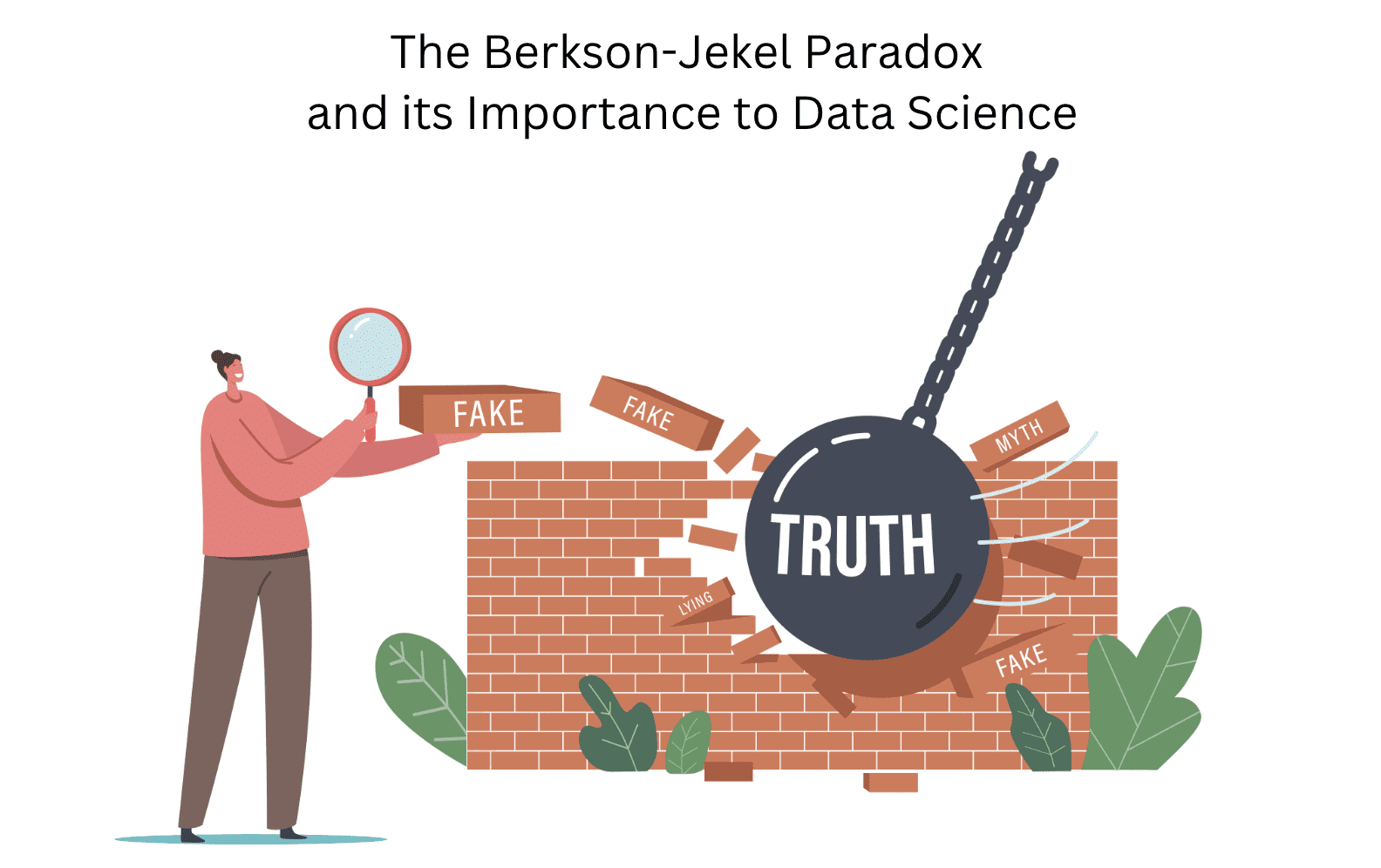
Image by author
If you are a Data Scientist or aspiring to one, you will know the importance of statistics in the sector. Statistics help data scientists collect, analyze, and interpret data by identifying patterns and trends, and then making future predictions.
A statistical paradox is when a statistical result contradicts expectations. It can be very difficult to pinpoint the exact cause as it is difficult to understand the data without the use of other methods. However, they are an important element for data scientists, as it gives them a clue as to what might be causing the misleading results.
Here is a list of statistical paradoxes relevant to data science:
- Simpson’s Paradox
- Berkson’s Paradox
- The false positive paradox
- The precision paradox
- The paradox of learning ability-Godel
In this article, we will focus on the Berkson-Jekel paradox and its relevance to data science.
The Berkson-Jekel paradox is when two variables are correlated in the data, yet when the data is pooled or subdivided, the correlation is not identified. To put it in simple terms, the correlation is different in different subsets of data.
The Berkson-Jekel paradox is named after the first statisticians to describe the paradox, Joseph Berkson and John Jekel. The discovery of the Berkson-Jekel paradox is when the two statisticians were studying the correlation between smoking and lung cancer. During their study, they found a correlation between people who had been hospitalized for pneumonia and lung cancer, compared to the general population. However, they did further research that showed the correlation was due to more hospitalizations for pneumonia in smokers than nonsmokers.
Why did this happened?
Based on the statistician’s first investigation of the Berkson-Jekel paradox, you can say that more research was required to discover the exact reasoning behind the correlation. However, there are also other reasons why the Berkson-Jekel paradox occurs.
- Hidden Variables: Data sets may contain hidden variables that affect the results. Therefore, when there is a study between the correlation of two variables, data scientists and researchers may not have considered all potential factors.
- Sample bias: The data sample may not be representative of the population, which can lead to misleading correlations.
- Correlation vs. Causation: One important thing to remember in data science is that correlation does not mean causation. Two variables can be correlated, but that does not mean that one is the cause of the other.
Statistical reasoning is very important in data science, and the main problem is dealing with misleading results. As a data scientist, you want to ensure that you produce accurate results that can be used in the decision-making process and for future predictions. Making incorrect predictions or misleading results is the last thing on the cards.
How to avoid the Berkson-Jekel paradox
There are a few methods you can use to avoid the Berkson-Jekel paradox:
Using statistical methods to control for hidden variables
- Statistical modeling – You can use statistical modeling to better understand the relationship between two or more variables. In this way, you can identify hidden variables that could potentially be affecting the result.
- Randomized controlled trials: this is when participants are randomly assigned to a treatment group or a control group. This can help data scientists control for hidden variables that may be affecting the results of their study.
- Combination of results: You can combine multiple study results to help you better understand the study. In this way, data scientists have a better understanding and control of the hidden variables in each study.
Variety of data sources
If you are dealing with misleading results because the sample data is not representative of the population, one solution would be to use data from a variety of sources. This will help you obtain a more representative sample of the population, investigate more about the variables, and gain a better understanding.
Misleading results can hold a business back. Therefore, when working with data, data professionals need to understand the limitations of the data they are working with, the different variables and the relationship between them, and how to avoid misleading results.
If you want to know more about Simpson’s paradox, read this: Simpson’s paradox and its implications for data science
If you want to know more about the other statistical paradoxes, read this: 5 Statistical Paradoxes Data Scientists Need to Know
nisha aria He is a data scientist, freelance technical writer, and community manager at KDnuggets. She is particularly interested in providing Data Science career tips or tutorials and theory-based knowledge about Data Science. She also wants to explore the different ways that Artificial Intelligence is or can benefit the longevity of human life. An enthusiastic student looking to expand her technological knowledge and her writing skills as she helps mentor others.






